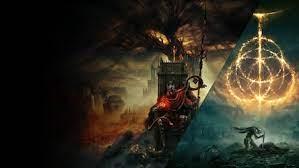In a world where traditional educational methods are often supplemented with interactive tools, The Tiranga Game emerges as a standout example of how play can be harnessed to teach children about history. Named after the Indian national flag, the Tiranga, this board game aims to impart knowledge about India's rich historical landscape in a way that is both engaging and educational. Combining fun with learning, The Tiranga Game provides a unique platform to introduce young minds to India’s past, fostering an early appreciation for their national heritage.
Design and Concept of The Tiranga Game
Game Mechanics
The Tiranga Game is meticulously designed to balance fun and education. It features a colorful, interactive board that represents various regions of India, each marked with historical events, famous personalities, and cultural landmarks. The board is divided into sections that guide players through different aspects of Indian history.
Players move around the board by rolling dice and answering questions or completing tasks related to historical events, famous leaders, and cultural practices. The questions are crafted to be age-appropriate, ensuring that children can understand and learn from them while having fun. Additionally, the game includes special cards and challenges that add variety and excitement, making the learning process dynamic and engaging.
Educational Content
At its core, The Tiranga Game is a treasure trove of educational content. The game covers a wide range of historical topics, from the ancient civilizations of India to the struggle for independence and modern-day achievements. Each question or task is designed to provide children with knowledge about important historical figures, pivotal events, and cultural traditions. This comprehensive approach ensures that players receive a well-rounded education about Indian history while enjoying the game.
Historical Lessons Embedded in Gameplay
Understanding India’s Freedom Struggle
One of the most significant aspects of The Tiranga Game is its focus on India’s freedom struggle. Through the game, children learn about key figures such as Mahatma Gandhi, Jawaharlal Nehru, and Subhas Chandra Bose, and their roles in the fight for independence. The game introduces players to crucial events like the Salt March, the Quit India Movement, and the role of various freedom fighters, providing context and fostering a deeper understanding of the country’s journey to freedom.
Exploring Ancient and Medieval India
The Tiranga Game also delves into India’s ancient and medieval periods, offering insights into the country's rich cultural and historical heritage. Players encounter questions and challenges related to ancient civilizations like the Indus Valley, the Maurya and Gupta empires, and medieval dynasties such as the Mughals. This aspect of the game helps children appreciate the continuity and evolution of Indian history over centuries.
Celebrating Cultural Diversity
In addition to historical events, The Tiranga Game highlights India’s cultural diversity. It includes questions and activities related to various festivals, languages, traditional arts, and regional cuisines. By engaging with these elements, children gain a broader perspective on India’s multifaceted cultural landscape, learning about the customs and traditions that make each region unique.
Educational Benefits for Children
Enhancing Historical Knowledge
The Tiranga Game serves as an effective educational tool by presenting historical facts and concepts in an interactive format. This approach enhances children’s knowledge and retention of historical information. The game’s engaging nature helps reinforce learning, making history more memorable and less intimidating.
Fostering Critical Thinking
Playing The Tiranga Game encourages critical thinking and problem-solving. Children are required to answer questions, make decisions, and perform tasks that challenge their understanding of historical events and cultural practices. This process helps develop their analytical skills and fosters a deeper comprehension of the subject matter.
Promoting Teamwork and Communication
The game is designed for multiple players, promoting teamwork and communication among children. As they work together to answer questions and complete challenges, they practice collaboration and learn the value of working as a team. This social aspect of the game contributes to the development of interpersonal skills and builds a sense of camaraderie.
Encouraging Curiosity and Exploration
By presenting history in a fun and interactive way, The Tiranga Game stimulates curiosity and encourages children to explore historical topics further. It serves as a springboard for deeper research and learning, motivating players to seek out additional information about the historical events and figures they encounter during the game.
Integration into Educational Settings
Classroom Use
The Tiranga Game can be a valuable addition to classroom activities. Teachers can use it as a supplementary tool to reinforce lessons on Indian history and culture. The game’s interactive format can make history lessons more engaging, providing students with a hands-on learning experience that complements traditional teaching methods.
Family and Home Learning
The Tiranga Game is also well-suited for family settings, offering a fun way for parents and children to learn together. It provides an opportunity for family members to engage in educational activities outside of the classroom, promoting shared learning experiences and discussions about Indian history and culture.
Conclusion
The Tiranga Game stands out as an exceptional tool for teaching children about Indian history in an engaging and interactive manner. By blending educational content with fun gameplay, the game offers a unique approach to learning that captivates young minds and fosters a deeper understanding of India’s rich historical and cultural heritage.
Through its well-designed mechanics, comprehensive historical lessons, and educational benefits, The Tiranga Game not only makes history accessible but also instills a sense of national pride and cultural appreciation in children. Whether used in classrooms or at home, it provides an enjoyable way for children to connect with their heritage and gain valuable knowledge that will stay with them for years to come.





